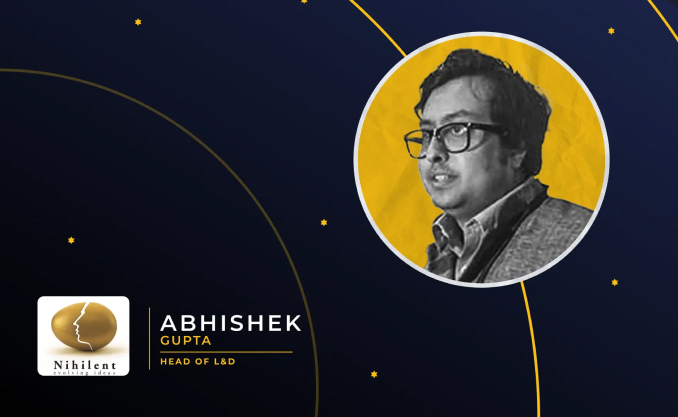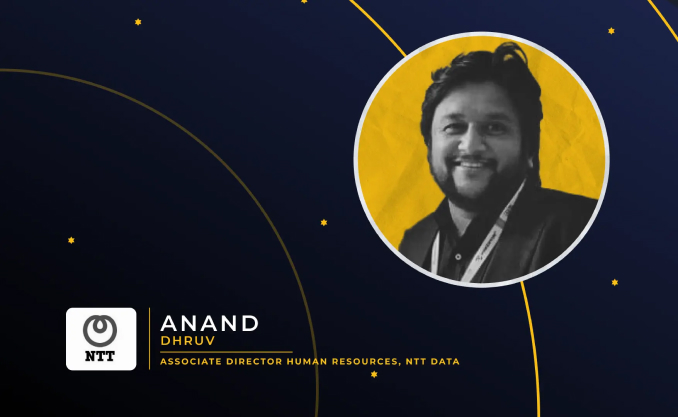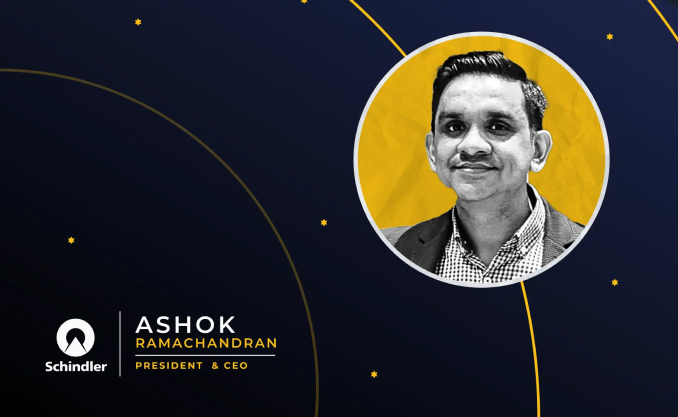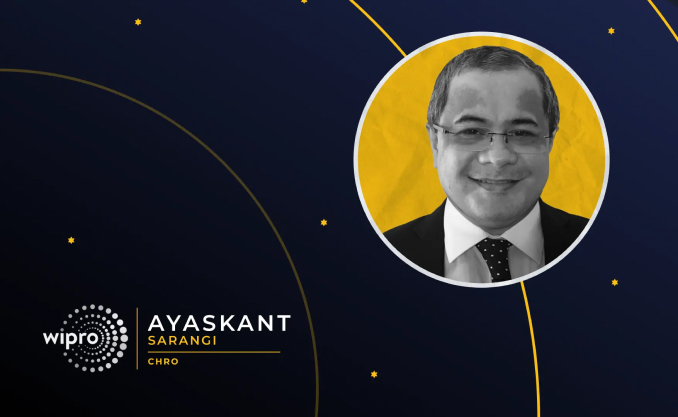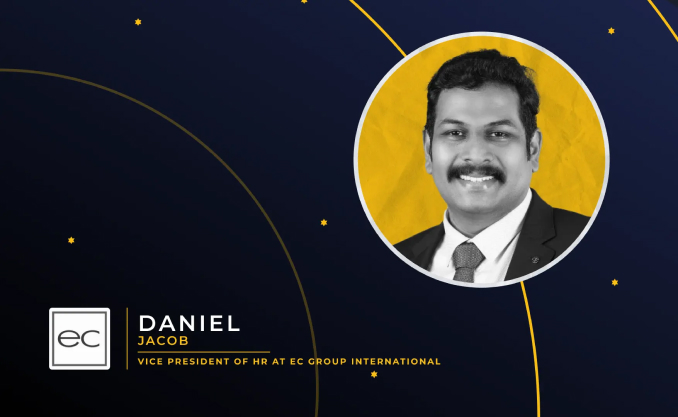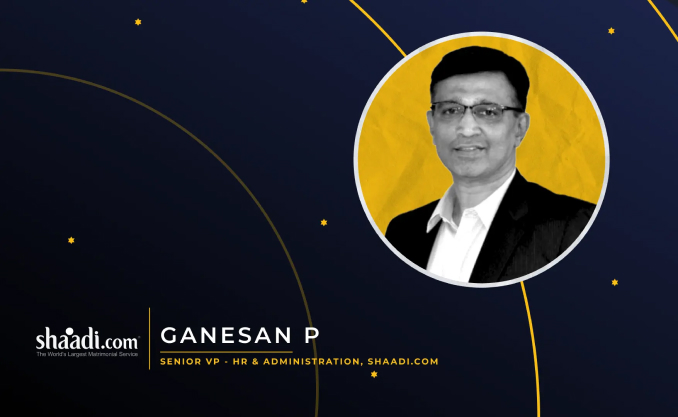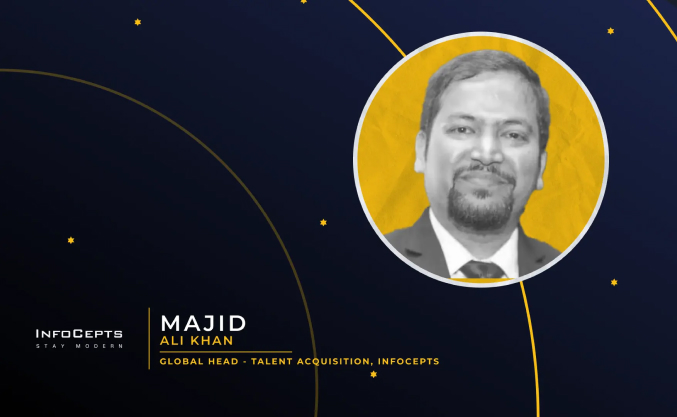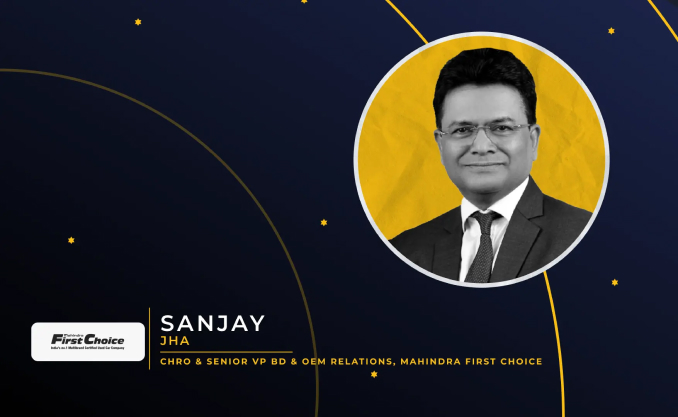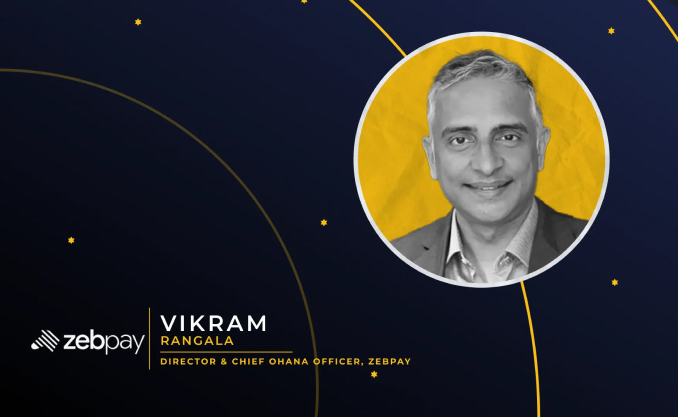Laxmi Karunya is the AVP of Talent Management at Pearl Global. With 15+ years of experience in HR, Laxmi has excelled at knowledge outsourcing and business processes across various HR functions.
Pointing out flexibility in work during COVID, Laxmi Karunya states, "Allowing flexibility to employees to decide whether they could make it to work or not, wherever it was possible is quite important".
According to Laxmi Karunya, CV screening is where recruiters spend a lot of time. It can however be reduced by getting the right set of tools to target potential applicants.
Table of contents
- About Laxmi Karunya
- Biggest motivating factor for HR
- Challenges faced during the early pandemic
- Healthy workplace and employee well-being
- Maintain remote sourcing quality
- Automated hiring solution
- A stage that needs streamlining
- Productive tools for organization of work
- Tasks to reenergize or reboot from work
- Advice for the younger generation
Hey Laxmi! Could you tell our readers a little bit about yourself and currently what you're doing at Pearl Global?
I am an HR professional with about 15 years of experience now. I’ve been working in the service industry. I have also worked for an investment banking company with an IT setup. Currently, I work for a company called Pearl Global Industries Limited. It’s an apparel manufacturing company. It is a different ball game compared to everywhere that I’ve been.
My role in this company currently is that of a talent management head. I take care of everything to do with talent from a point of view of ensuring their onboarding to taking care of their immediate needs, ensuring a fair assessment, mentoring in the organization, ensuring we are aligned to our compensation benchmarks, and giving them the right culture where they are well aware of what they need to achieve, how they need to deliver, and finally, what comes out of it.
What is one of the biggest motivating factors that keep you going as an HR?
I think the change in the environment now and then, the expectation that companies have from human resources department from a point of view of immediate adaptation to anything unique, that happens. For example, if, let’s say there is a major recession going on, then HR is the frontline finalizing policies and processes to implement. This pandemic also kind of stretched all the myths about how innovative could human resources department get to ensure that there’s wellness, people are well motivated, and also working from home!
So, I think what keeps anybody in the human resources motivated is the immediate expectation that HR kind of picks the threads of anything new when it comes to the industry, the companies, the economy, even with the pandemic, like I said the immediate shift of what we should be doing, it’s like thinking on your foot, being innovative in whatever policies you put together. So that is one of the very motivating factors as human resource personnel for me, being on my toes all the time literally.
What is one of the biggest challenges that you faced during the early days of the pandemic?
Let me first answer that in a very generic way, I mean something that would have impacted all industries. Then I’ll come to the manufacturing industry and what is the uniqueness of that.
So, I think everyone across different industries, the first thing that happened was people stopped coming immediately leading to a stop in work from the office.
Now not everybody was equipped to move to that kind of setup where everybody is working from home. So, I think one thing that kind of became a huge issue was how do you get people to work continuously from home ensuring that they have the required technology. A lot of companies for example sent out tables and ergonomic chairs and all kinds of desktops and laptops to their employees across the country and also wherever they were sitting to ensure that at least 100% productivity is being provided.
Second, I think is the well-being of an employee when they’re working from home because everything kind of shut down; everything’s on you, especially women employees who also had to take care of families, kids, elders in the house, cooking, cleaning plus working right?
How do you ensure they are motivated, and their productivity is at least to the level that it was earlier before they were coming to work, and provide the support that they need from a wellness point of view, health, mental, emotional and I think physical also will be essential. So, a lot of companies started to provide online consultations for doctors, including our company making them comfortable from the point of view of ensuring there are a lot of benefits provided from a hospital alignment point of view, including the availability of doctors and medicines and all the complications that came along with being unwell during this time because the first phase, the second phase hasn’t been very kind to the human population.
All the struggles that I think everybody has been able to go through were quite exhausting. The second most important thing was emotional, mental, and physical well-being critical. Everything that was being done from an engagement point of view was earlier one-on-one or face-to-face. Now how do you move to do all of this on a Zoom call? How do you make it remote? How do you ensure all your team members are connected? The third thing is anybody who is new is joining a new setup, he or she would probably not know anyone. How do you ensure they are connected to each team member? How do you make a new hire belong in a setup and they are not meeting anyone in person at all?
Talking specifically about the industry that I work in, manufacturing has been hit very hard as far as the pandemic is concerned.
We had to start working immediately after the lockdown was relaxed because obviously if you’re saying you’re manufacturing, your business comes in when you start manufacturing, right? So how do you ensure the safety of people or ensure they are keeping well when they’re coming to the office.
They are meeting people. There’s so much crowd when you’re asked to avoid crowds so there was a lot of focus on ensuring COVID norms are being followed. People will be isolated whenever possible. Cafe areas were closed. So how do you ensure food is served? All kinds of issues that one went through as far as manufacturing is concerned were quite difficult. And finally, I think once we kind of came back full-fledged getting people back to work because there’s so much uncertainty, especially people who could continue to work from home wherever we could provide them with benefit, of course, we did. But I think it kind of just became asking people to come back to work was, I think, another big challenge for us.
How did you ensure healthy workplace culture and employee well-being at Pearl Global during the COVID times?
First and foremost, I think allowing flexibility to employees to decide whether they could make it to work or not, wherever it was possible was essential during COVID times. Now for somebody who’s on the shop floor, maybe that’s not so much of an option of whether they can come to work or not, but ensuring that they know they are well taken care of is again an important factor. So, for example, my organization had ensured that all their worker categories, anybody who’s on the shop floor and otherwise were vaccinated at all costs, sponsored by the company.
The company took the cost on themselves and ensured that everybody was vaccinated, So, one, as I said, was allowing work, timing, and flexibility. The second was managing the vaccinations for all our worker categories. And we used to have camps in factories and offices where authorities would come and vaccinate them so that they wouldn’t have to be bothered with going to hospitals that were crowded and unhealthy.
We would give regular tips to employees to ensure they were managing their mental health and of course, how to manage teamwork, ensuring that the regular engagement activities are going on, especially keeping it normal, like a celebration of any kind of events, festivals like the Diwali, Christmas holiday, all of that. And of course, there are a lot of other benefits that we provided to our employees, like making online doctor consultations free of cost. We took medical insurance which was very COVID-specific for all our employees in the organization.
We bought oxygen cylinders which we would then provide to our employees whenever they needed them along the oximeters. So, it was something that we kind of took up as a challenge on ourselves and what we can do best to make it all happen so that employees are well assured that they are very well taken care of and there’s nothing to be worried about.
How do you think recruiters who are hiring remotely to a great extent currently can maintain quality sourcing?
Well, it’s been a challenge. As someone who oversees the talent acquisition for my company, it’s been a challenge to hire people from across industries. I think one very important thing I will have to do to kind of ensure quality, is to create a compelling job description where candidates know exactly what is expected of them, and only those candidates apply who know they are a clear fit.
The second is to emphasize the culture of the company. Communication, for example, is one very important criterion where we’ve used LinkedIn extensively to communicate what my organization stands for. What kind of people do we hire? All our hiring is on LinkedIn. We talk about our people a lot. So, anybody and everybody who is interested in applying or has applied to the organization has seen what it has to offer. , We use video interviewing rather than telephonic. We’ve moved from doing telephonic interviews to doing first-level interviews as video interviews.
This move has ensured our first level selection process from earlier 20 people to about 35 odd people. So, this kind of ensures that when we interview the first time, the kind of talent we then take forward to the next level is a suitable one. So, there’s a lot of focus on trying to figure out talent from within the organization before we say, okay, can we look outside? And the last and the most important thing that has also worked out for us is referral programs. At least 40% of our hires are referrals I think it’s been challenging, but as I said, a couple of these pointers have ensured that our quality is well maintained and we’ve seen decent results. I think this has been a learning experience for us in improving our recruitment process also. And we’ve seen results.
Does Pearl Global prefer an automated hiring solution, either end-to-end or for a particular stage?
If you say do we prefer? Of course, we would prefer. But right now, keeping in mind constraints are still being dealt with due to the pandemic. Yes, the intention is to over a period of time move to the AI model of hiring where it’s less time-consuming and much more effective.
If you had to mention that one particular stage that you feel like “I wish this process was really automated, it would save a lot of time and cost for the entire team” what would it be?
I think it would be the first round of resume screening for me that takes a lot of time. It’s very interesting that when you put up a position on LinkedIn or any other job site, anybody and everybody applies, there is no clear view of whether this job applies to me or not. So even if I need someone with six years of experience, I will have a two and a half years old experienced employee also applying for it.
So, CV screening I think is where we spend a lot of our time. Once we have the right candidates and the right CVs then it becomes easier with everything. . But that first level of CV screening, I think that’s where if we were to kind of spend less time there the team would be spending a lot more productive time somewhere else.
And you don’t want to let these candidates go because these may be future employees for us but just the fact that screening of all the CVs to see if they make sense or not. Every single CV takes about five minutes and for every role that you kind of put there are about 150 or more CVs to screen from.
So, if you were to convert it into the time you spent looking at 150 odd CVS you could have got interviews done and spoken to the candidates and spent a lot more time engaging your new hires, onboarding them, giving them the right experience of joining the organization, etc.
On a personal level, what are the 3 productive tools that you currently use to organize work and keep on top of all things that you do on a day-to-day basis?
For me, it’s Excel sheets. I spend about 15 minutes creating my to-do list in the morning in the sense that what is critical, what is not important but critical, what is urgent but not important, and trying to put it all together to tackle it one after another. The second is managing your emails and how much time you spend on them.
The amount of time you spend replying to an email takes away a lot of your productive time. So, what I do is for the first half-hour after I go through my list of emails and sort out what needs to be done. I’m not spending a lot of time trying to see who’s sent an email. What should I respond to? I’ve done it and it’s not been very productive for me. And the 3rd is analytics. If you’re able to provide your data, HR analytics is going to be the next big thing, even if it is through regular HR, Excel, or AI.
So, spending some time doing anything that we do, there has to be a return on investment on it. So, what kind of recruitment costs are we incurring, for example? How much time is my team spending? Let’s say like I said, CV screening? So I know for a fact that this is where we waste a lot of our time. Video interviews have made life very easy for us. All you have to do is get onto the phone call and it’s over and done at the convenience of a click.
Technology in this day and time has been a boon. Travel has gone down for us also, so we kind of use a lot of our time on Zoom calls to make conversations easy and specific. And it’s very to the point. So, if you have an agenda in place, it works well.
To summarize, there’s my to-do list in the morning, looking at my emails every 2 hours. Then, of course, analytics for whatever that I’ve been doing.
On the level of maintaining a work-life balance what are some things that you do to reboot or step away from your work and then reenergize yourself to begin again?
So, it’s a little different for me because we’ve been working from the office for a while now. As I said, the minute there was some relaxation, all of us came back to work in manufacturing. . We have been going to the office for a while now. But the advantage of doing that is that it allows you to maintain that work-life balance. So, while you’re in the office, you are working. Once you’re home, it’s your own time.
I was reading some research on the productive results of people working from home and the productivity has gone down quite a bit. They’re spending a lot of time working, but the productivity of the work that they deliver is going down. And it’s very interesting because everybody before the pandemic thought that working from home, a good hybrid model is the best way to do to improve productivity. I was happy coming back to the office, to be honest, because then it clearly defined my work time and my home time.
Lastly, if there’s one piece of advice that you could give to HR professionals, especially those who have joined the industry during the pandemic, what would it be?
What I’ve realized in my years of experience is HR is no rocket science. They try and explain to you the logic behind something. But what I’ve realized and I’ve struggled with people who come fresh out of college is they want to implement theory as a step-by-step guide which is already provided and you want to kind of implement that because that’s what you’ve been taught. But that’s not how it works in real life.
You have to be practical; you have to look at what your company is ready for. Just because a theory says X to Y doesn’t make it X to Y, you’ll want to sit down and talk to people and understand that even that X makes sense to them or not. And maybe you just need to start with the very basic, which is maybe the A, and finally not make it very complicated. Leaders don’t understand the complicated jargons that we use and it’s something that I try and avoid in any organization where I work.
My advice would be to keep it simple, keep it practical, and I think everybody will be willing to listen to you. Don’t complicate things is one of the best ways to go about it.


